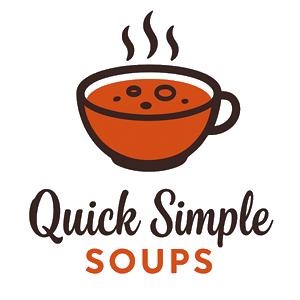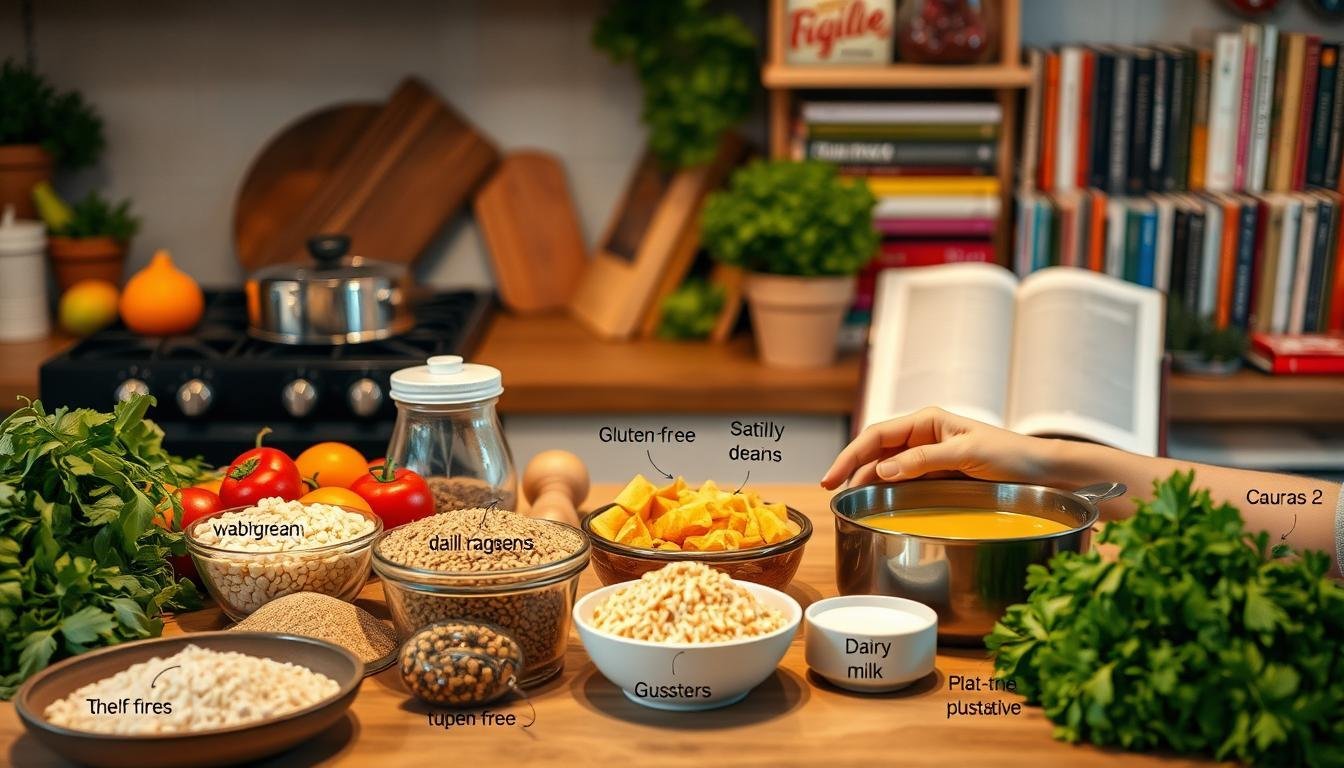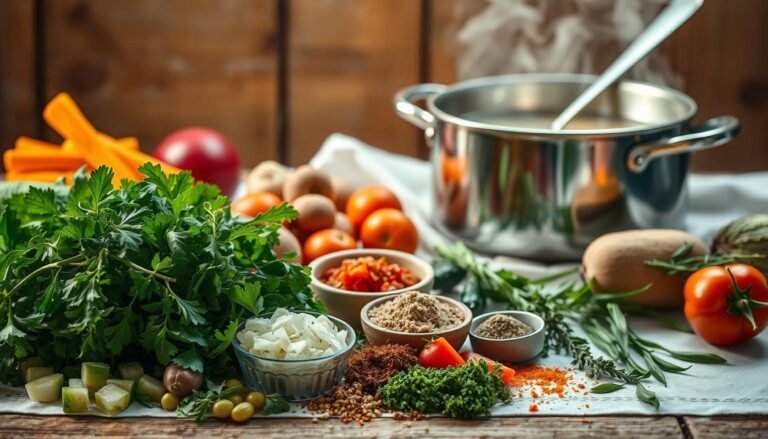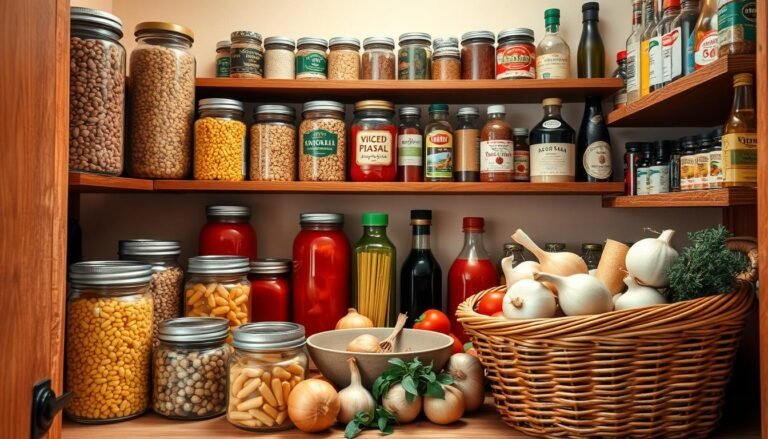Disclosure: This Post Contains Affiliate Links; We earn a commission on purchases.
Changing soup recipes to fit dietary needs is key for those with special needs. With more people aware of dietary limits, it’s vital to tweak recipes to meet these needs.
It’s important to adjust soup recipes for health reasons, personal taste, or lifestyle. This article will show how to change soup recipes for different diets. This way, everyone can enjoy a warm, healthy bowl of soup.
Key Takeaways
- Understanding different dietary needs and restrictions
- Modifying soup recipes to accommodate various dietary requirements
- Tips for adjusting ingredient lists and cooking methods
- Exploring alternative ingredients for common allergens
- Creating inclusive meal plans with adapted soup recipes
Understanding Common Dietary Restrictions and Needs
Dietary restrictions can be complex. But it’s key to understand them for adapting soup recipes. With more special diets and awareness, it’s vital to meet these needs.
People follow dietary restrictions for many reasons. It could be for health or personal choice. Knowing the reasons helps in making better kitchen choices.
Medical Restrictions vs. Lifestyle Dietary Choices
Medical dietary restrictions come from health needs, like celiac disease or diabetes. Lifestyle choices, like veganism or keto diets, are personal. Knowing the difference helps tailor soup recipes for specific needs.
Common Allergens and Problematic Ingredients in Soups
Soups have many ingredients, some of which are allergens or can cause issues. Gluten, dairy, and certain spices are common culprits. Knowing these helps make soups safe for all.
Reading Food Labels for Hidden Ingredients
Many ingredients have complex names on labels, making it hard to spot allergens or restricted items. Learning to read labels well is key for accommodating dietary needs. It helps ensure all sensitive ingredients are considered in your soup recipes.
By understanding and addressing these dietary needs, you can make soups that are tasty and safe for many people.
How to Adapt Soup Recipes for Dietary Needs
Adapting soup recipes for different diets is all about understanding the recipe’s core. It’s not just about swapping out ingredients. You need to keep the flavor and nutrition in check. This way, you can make healthy soups for many dietary needs.
Creating a Flexible Base Recipe
A flexible base recipe is key for making soup variations for different diets. Start with a basic broth or stock. Then, add ingredients that fit the diet you’re aiming for. For example, use a vegetable broth for vegan or vegetarian soups.
For tips on adjusting recipes, check out this guide on converting and adjusting.
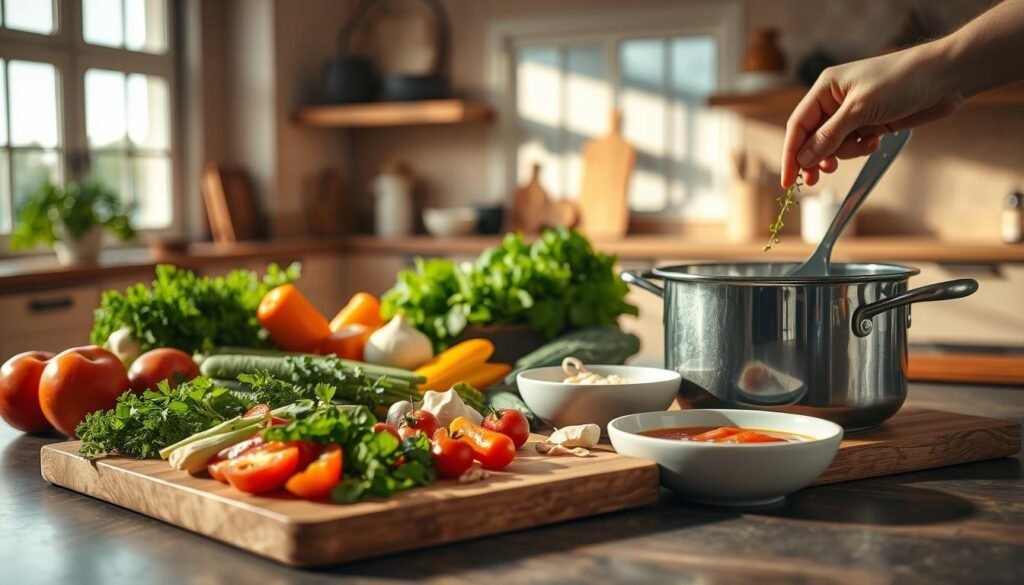
Techniques for Maintaining Flavor During Adaptation
Keeping the flavor right is important when changing soup recipes. Use herbs and spices to add taste without allergens or bad ingredients. For example, use garlic and onion powder instead of fresh to avoid common allergens.
Adding umami-rich ingredients like mushrooms or seaweed can also boost flavor. This way, you can make tasty soups without breaking dietary rules.
- Use herbs and spices for added flavor
- Incorporate umami-rich ingredients
- Avoid common allergens
Adjusting Cooking Methods for Different Dietary Needs
Different diets might need different cooking ways. For gluten-free soups, make sure all ingredients are gluten-free. Slow cooking helps keep nutrients and flavors in, making soups both tasty and healthy.
By changing cooking methods, you can meet various dietary needs while keeping your soups top-notch.
- Choose cooking methods that retain nutrients
- Be mindful of cross-contamination with allergens
- Adjust cooking times based on ingredients
Specific Adaptations for Common Dietary Restrictions
It’s easy to change soup recipes for different diets. A few tweaks can make soup variations for dietary needs. This way, everyone can have a warm, comforting bowl.
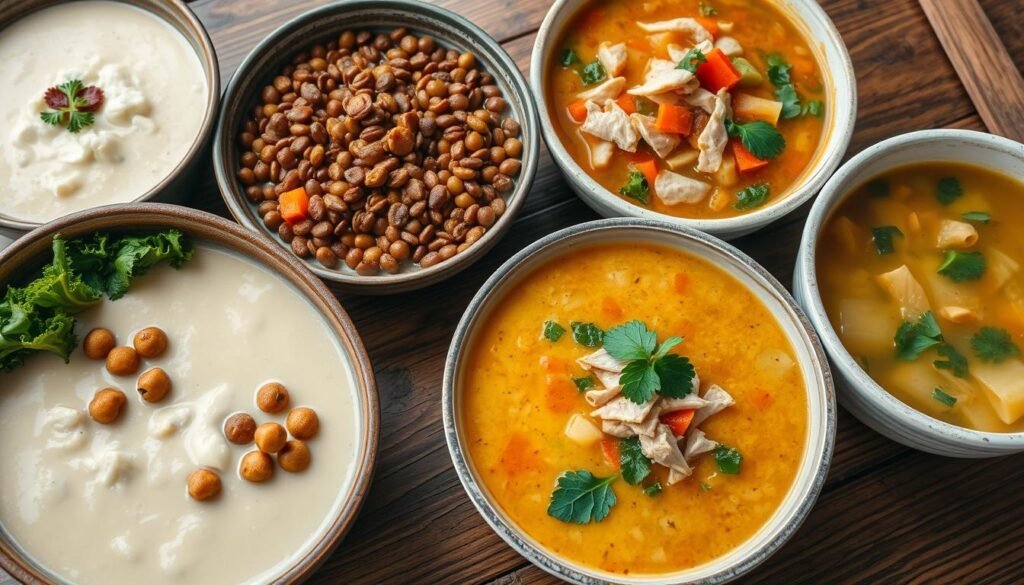
Gluten-Free Soup Modifications
For those with gluten issues, making soups gluten-free is simple. Swap out regular noodles for gluten-free ones. Also, watch the broth for gluten. Using gluten-free soy sauce or broth helps a lot.
Dairy-Free and Lactose-Free Alternatives
For dairy-free and lactose-free diets, just swap dairy for non-dairy. Try almond milk, soy milk, or coconut milk instead of cream or milk. Nutritional yeast adds a cheesy taste without dairy.
Vegan and Vegetarian Transformations
To make soups vegan or vegetarian, replace animal products with plant-based ones. For vegan soups, remove all animal products, including honey and gelatin. Use vegetable broth instead of meat broth, and plant-based milks for creamy soups.
Low-Sodium and Heart-Healthy Adjustments
For low-sodium diets, cut down on salt. Use herbs and spices for flavor instead. Choose low-sodium broths and avoid processed foods for heart-healthy soups.
Keto, Paleo, and Low-Carb Soup Adaptations
To fit keto, paleo, or low-carb diets, focus on protein and low-carb veggies. Use vegetable broth, add lean proteins, and include healthy fats like coconut oil or avocado.
These changes let you enjoy soups for all customized diets and dietary restrictions. Mealtime becomes more fun and inclusive for everyone.
Essential Ingredient Substitutions Guide
Substituting ingredients is key to making soups for different diets. It helps when cooking for someone with allergies or special diets. Knowing what to swap can make healthy soups that everyone can love.
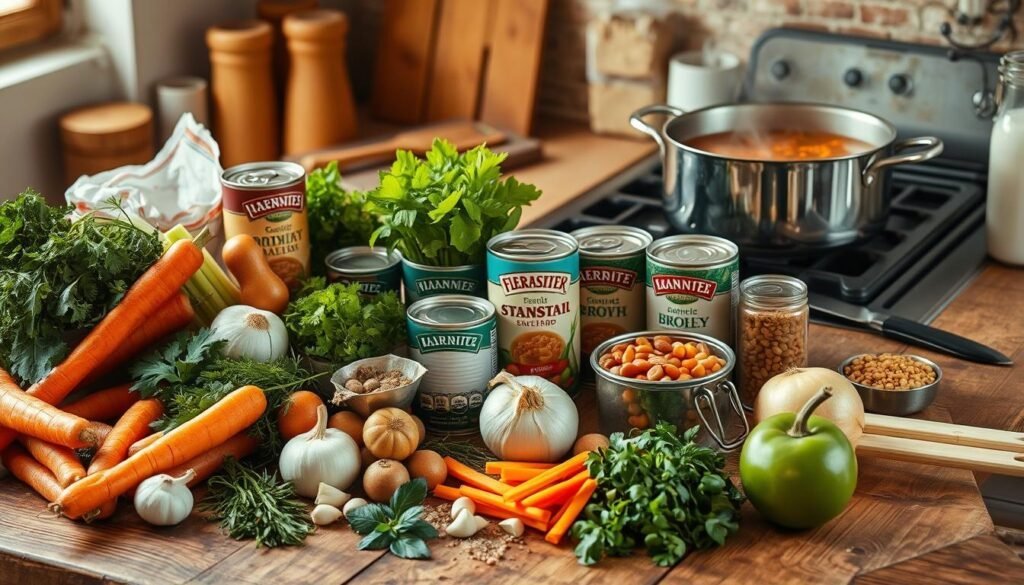
Protein Alternatives for Various Diets
Protein is important in many soups. Vegetarians and vegans can use tofu, tempeh, or seitan instead of meat. For a leaner option, chicken or turkey breast works well.
Plant-based protein sources like lentils, chickpeas, and beans are great for adding protein without animal products.
- Lentils for a high-fiber, protein-rich option
- Tofu or tempeh for a soy-based protein source
- Chicken or turkey breast for lean protein
Alternative Thickening Agents
Finding the right thickening agents can be tricky for some diets. Instead of flour, try cornstarch, arrowroot powder, or tapioca flour. Pureed veggies or beans can also thicken soups naturally.
- Cornstarch for a gluten-free thickening option
- Arrowroot powder for a neutral-tasting thickener
- Pureed vegetables for added nutrition and thickness
Flavor Enhancers Without Common Allergens
Adding flavor without allergens like gluten, dairy, or soy takes some creativity. Use herbs and spices to deepen flavors. Citrus juice, vinegar, and salt are also great for adding taste without allergens.
Testing and Adjusting Your Adapted Recipes
After making changes, it’s important to test your soups. Taste and adjust as needed. This ensures your soup is safe and tasty for everyone.
Learning these substitution tricks lets you adapt recipes for any diet. This makes your soup recipes welcoming for all. It’s a way to cook with care and inclusivity.
Conclusion
Changing soup recipes to fit your diet is easy and good for you. Knowing about common diet limits and making a few swaps lets you enjoy tasty, healthy soups.
Whether you’re on a keto diet or need to fit other dietary needs, soup recipes are very flexible. You can make many different versions. This way, you can create meals that are just right for you.
Trying new ingredients and flavors makes your meals better and more fun. By changing soup recipes for your diet, you’re moving towards a healthier life.
FAQ
What are the most common dietary restrictions that need to be considered when adapting soup recipes?
How can I identify hidden ingredients in store-bought soup ingredients or broths?
What are some techniques for maintaining flavor when adapting soup recipes for dietary needs?
Can I use the same cooking method for different dietary adaptations?
What are some protein alternatives for vegan or vegetarian soup recipes?
How can I thicken soups without using common allergens like gluten or dairy?
Are there any flavor enhancers that are free from common allergens?
How do I test and adjust adapted soup recipes to ensure they meet dietary needs?

Ryan Conlon is the comfort food fan behind QuickSimpleSoups.com, where he shares easy soup ideas, smart shortcuts, and helpful tips for busy home cooks. Ryan believes a good bowl of soup doesn’t need to be complicated—and he’s here to prove it. Whether you’re looking for quick weeknight meals or cozy classics with a twist, Ryan’s simple approach helps you serve up satisfying soups with minimal effort.
Subscribe to Our Newsletter
